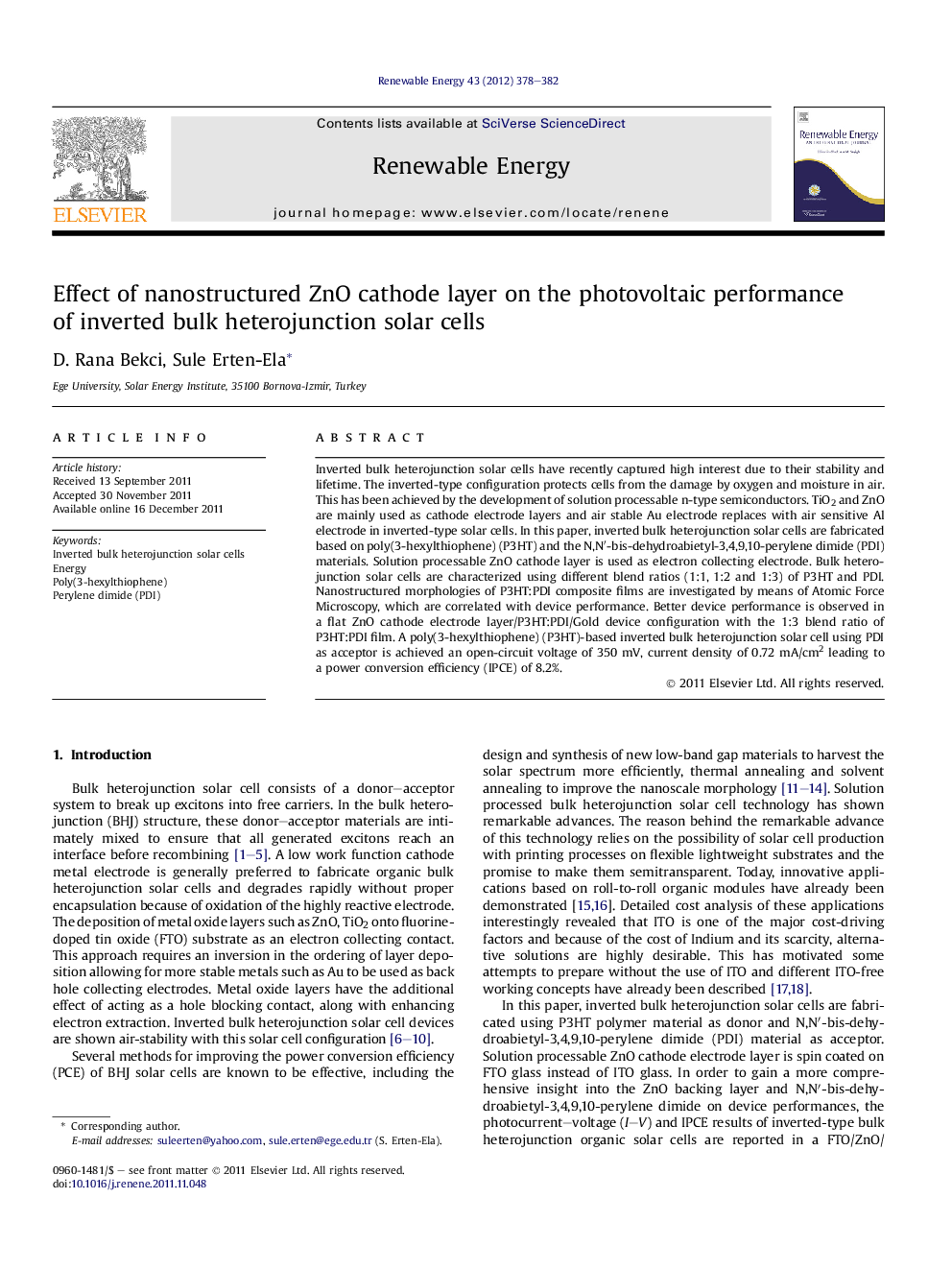| Article ID | Journal | Published Year | Pages | File Type |
|---|---|---|---|---|
| 301082 | Renewable Energy | 2012 | 5 Pages |
Inverted bulk heterojunction solar cells have recently captured high interest due to their stability and lifetime. The inverted-type configuration protects cells from the damage by oxygen and moisture in air. This has been achieved by the development of solution processable n-type semiconductors. TiO2 and ZnO are mainly used as cathode electrode layers and air stable Au electrode replaces with air sensitive Al electrode in inverted-type solar cells. In this paper, inverted bulk heterojunction solar cells are fabricated based on poly(3-hexylthiophene) (P3HT) and the N,N′-bis-dehydroabietyl-3,4,9,10-perylene dimide (PDI) materials. Solution processable ZnO cathode layer is used as electron collecting electrode. Bulk heterojunction solar cells are characterized using different blend ratios (1:1, 1:2 and 1:3) of P3HT and PDI. Nanostructured morphologies of P3HT:PDI composite films are investigated by means of Atomic Force Microscopy, which are correlated with device performance. Better device performance is observed in a flat ZnO cathode electrode layer/P3HT:PDI/Gold device configuration with the 1:3 blend ratio of P3HT:PDI film. A poly(3-hexylthiophene) (P3HT)-based inverted bulk heterojunction solar cell using PDI as acceptor is achieved an open-circuit voltage of 350 mV, current density of 0.72 mA/cm2 leading to a power conversion efficiency (IPCE) of 8.2%.
► Inverted bulk heterojunction solar cells are fabricated.► ZnO backing layer is used as electron collecting cathode electrode.► Bulk heterojunction solar cells are characterized using different blend ratios.
